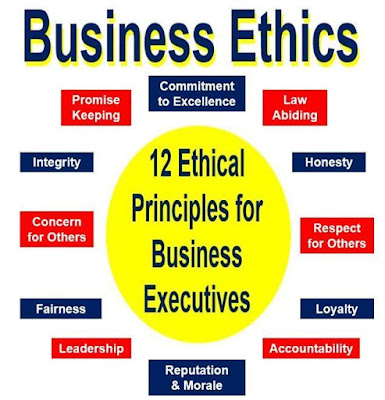Evaluate, Revise, and Renew your Business Strategies for Social Impacts
Evaluate, Revise, and Renew your Business Strategies for Social Impacts
So you've cultivated your purpose. You've tested your assumptions. You've found the win-win, and you've brought it home. Now what? Now it's time to test whether you're actually achieving the purpose that you've set out to achieve. Does it work? Are you having the impact that you aspire to have? How do you Evaluate, Revise, and Renew? I'm going to suggest that it's a five step process, fundamentally. The first is to know your purpose and to know your goal. And here, I mean, really operationally, with specificity. So it's not so much the larger purpose. It's the how are we going to actually measure this larger purpose? We'll talk more about that. That's step one. Step two is figuring out the logic model, the causal chain that connects your bold ambitions to your intended impact. And we'll talk about what's a logic model. The third step is to gather data. The fourth step is to assess your performance. You've gathered data on this intended impact. Are you doing as well as you expected and hope? And the fifth step is to revise and improve because there is always room for improvement. As I talk about these different steps and the process during this lecture, I'm going to really emphasize four of these steps. Knowing your goal, what is the operational impact you want to have? Figuring out the logic model, assessing your performance, are you doing as well as you'd hoped? And how you revise. I'm going to spend less time talking about how you gather the data. It's a really important step. But it could be the subject of another course. So let's dig onto knowing your goal. What's the operational impact you really expect to have? So the point is, here you need to take your broad, ambitious, motivating purpose, and make it operational and measurable. So perhaps we can think back to this company Etsy that we've talked about. Etsy's purpose is to reimagine commerce in ways that build a more fulfilling and lasting world. That's what they say. Our purpose is to reimagine commerce in ways that build a more fulfilling and lasting world. Wow, how do you measure that? How many sellers do you want to have on your platform? How many countries should they be from? Is gender important? Etsy has many women sellers. Is that good? Is that bad? Do we feel good about that? Is it important whether your sellers are in business for fun and creativity or whether they're doing it to make money and to benefit themselves, improve their lives economically? Is it important how much money the average seller is making? Is it important how many of your sellers actually stay as sellers year after year. So if we're going to judge our impact, if Etsy were going to judge it's impact and try to evaluate it's impact on these different metrics, it has to know what goal it's really trying to achieve. What is the operational impact that you really expect to have? As you can imagine, it can be tough to figure that out to translate your purpose into specific metrics. The next step in the process is to figure out your logic model. Your logic model is the casual chain that connects your bold ambitions to your intended impact. So logic models are really conceptual tools that are often used in the nonprofit sector, but it turns out they're really helpful and useful for purpose driven companies, too. And essentially a logic model is a chain of, if you do this, then this happens, then this happens, then this happens, then we achieves the impact we want in the world. So its five links in this chain. The first link, the first step is inputs. These are the resources needed to operate your program or business. I'll give you the five links and then I'll give you some examples. So first, inputs, resources needed to operate your program or business. Second, the activities, what you're organization or business actually does or makes. Third, we've got the inputs, you've got the activities. Now it is the outputs. This is the number of products or services that your organization or business makes or sells or offers. Next in the chain is the outcomes, what's actually the benefit to the people who received you products and services? What are your customers, your employees, your stakeholders, how do they benefit from these outputs? And the last is the impact, the long-term benefit to recipients and communities. That's pretty abstract, let me give you an example. And the example I'm going to give you is actually from the non-profit sector. It's a, we'll do some for profit examples in a moment. This example is KIPP. KIPP schools in the United States. KIPP stands for Knowledge Is Power Program. KIPP Schools have hoped to be transformative forces in the lives of poorer children and communities. So very successful schools grown widely in the United States. What are the inputs? The inputs needed to operate KIPP, teachers, curriculum, school buildings, students, funding. Some will get you pretty far. What's the core activity in the logic chain in their logic model. Teaching, student retention. What's the output. Well, it's really the number of kids taught, the n umber of kids who graduated from high school. What's the outcome? The immediate benefit beyond the number of kids taught? Well, it's that these kids learn and that they're ready for college or career. And what's the long-term impact that KIPP hopes to have? Really it's that these kids graduate from high school and that they are ready to pursue meaningful lives, they're ready to go on to college. They do go on to college. The hope is that they will go on to college, and that they'll graduate. And they'll go on to live lives that are empowered, that are economically secure. And, ultimately, communities will improve. So that's the logic model, at least how I see the logic model for KIPP. It's interesting because I think this is a good example of why I say evaluate, revise, and renew. Is when KIPP looked at these steps in the process, they discovered that the impact they wanted to have wasn't quite there. So kids were graduating from KIPP schools, applying to college, getting into college. But KIPP discovered that their students actually had lower college graduation rates than they hoped. The kids were still doing better than they might have done had they not gone to KIPP schools. But KIPP really wanted to see higher college graduation rates after kids graduate from KIPP and go onto college, and so they revised their program. They took steps to support their students when they're in college. It's a great example of checking the logic chain, evaluating your performance at each step, and saying we need to make some changes. Okay, let me give you another example. In this case, a for-profit company, I think a really interesting example. This is the example of MTV. So MTV, as you may know, is an American cable and satellite television channel. They became famous when they launched music videos before the Internet. This is how you saw music videos, you saw them on MTV. They still catered to a young audience, the youth audience. They do a lot of reality television and they have a social mission. So let's go through their logic model in a particular example of their logic model. So inputs, TV producers, distribution network, everything it takes to put on television shows, and distribute those shows. Activities, I want to focus on a particular activity, the reality TV shows, and specifically the reality TV show called, 16 and Pregnant. Yep, they had a reality show when they got real 16 year olds who were pregnant and they film them. They film this young girls and their boyfriend as they went to the process of pregnancy and having a child at 16. So that's the activity. What's the output? Well, million of viewers see the show. What's the outcome? Well, that's interesting, people were worried about this. The outcome was that viewers learned that being 16 and Pregnant is a really bad idea. It's not fun. It's not romantic, being a 16 year-old, unmarried, having a child when you're a teenager, not a great idea. What's the impact? The impact is a reduction in teen pregnancies in states and communities where there were many viewers who watched MTV's 16 and Pregnant, right? This sounds kind of incredible. It was actually very rigorous research that has done this work and shows that MTV show, 16 and Pregnant actually seems to have had a causal impact on reducing pregnancies as teens learned they better be more careful. So that's an example of a logic chain. And finally, one more logic model, this one for TOMS Shoes. So TOMS Shoes is an American shoe company with a social mission. It's also one of the first companies that launched this buy one give one model. So, hey customers, if you buy a pair of shoes, we will give a pair of shoes away for free to very poor children around the world, poor communities, where kids couldn't and adults might not have the money to buy new shoes. That was TOM Shoes model. Let's talk about their logic model and I'm going to explain to you where it went awry. Where they discovered that there were some push back on the impact they had and how they've actually taken steps to revise their model. So inputs, shoe production, sales, customers, marketing. Activities, buy one shoe, give one shoe, or buy a pair of shoes, give a pair of shoes, that model. And millions of shoes donated to poor communities around the world. What's the output? Millions of poor children and adults get free shoes. What's the outcome? That gets a little trickier. What happens when you give away millions of shoes? Well, presumably, kids and adults are happier and they like getting free shoes. TOMS said that he disease could be prevented. TOMS Shoes said this. Experts were more skeptical about this. There are not so many diseases that are transferred through people walking barefoot. And furthermore, there seemed like there were better ways to prevent disease. Maybe you could actually build sanitation systems rather than bringing and giving people free shoes. So people, critics, were not so sure about the outcomes. And what about the impact? The impact of this TOMS Shoes model, at least what critics said is, it actually disrupts the local economy when you give shoes away. It hurts the local shoe sellers. It hurts local manufacturers. It creates dependents. So TOMS Shoes bold ambition wanted to have this social mission of doing good in the world, helping poor communities. There was a lot of push back from their model. And a lot of criticism that the logic chain didn't quite work the way it was supposed to work. To their credit, TOMS Shoes received this feedback, took it to heart, and said, we're going to refine our model. We know what the impact we want to have on the world, and we're going to revise our model, revise our logic chain to have that impact. What did they do? Well, they continued to have the same inputs producing shoes, sales, customers, and marketing, but their activities moved beyond just this buy one give one model. Specifically, they began manufacturing shoes in the countries where they're donating them. So they now manufacture the shoes that they're donating. They manufacture those shoes in India, in Ethiopia, in Kenya, and in Haiti. What are their outputs? People are still getting shoes, they're very careful to donate shoes in the very poorest communities where there's not a lot of other resources. But they are also building jobs, building manufacturing plants, creating and strengthening employment. What's the outcome? People are happy with the shoes that are donated. But, again, those were in the very poorest communities. They are building jobs and creating secure employment in other communities in these countries where they want to make a difference in the world. And what's the ultimate impact? They are supporting the local economies building the local economies. So an example of how you revise the model? Taking a look at the logic chain, and improving your model to strengthen your impact. So to wrap up, we've created a worksheet that'll allow you to look through your own logic model. Maybe this is logic model for your own company or maybe it's a hypothetical logic model, some problem you'd like to solve and you'll take the effort of working through the steps in the logic model to see, can you have the impact that you want.




Nhận xét
Đăng nhận xét